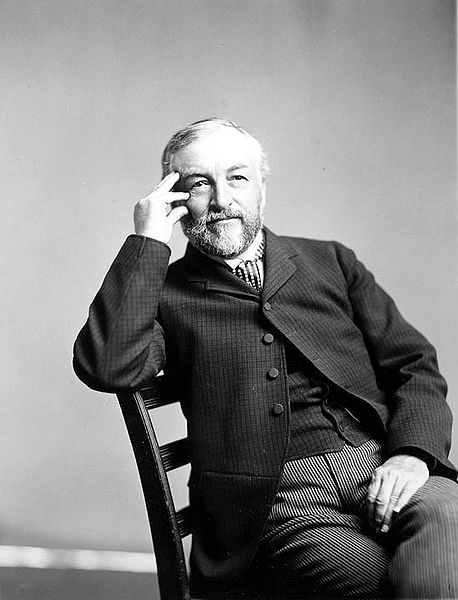A Million Years, Give or Take

Samuel Pierpont Langley, pictured above, is not a household name, but, if history meandered a little differently, he’d be known by every schoolchild in America, if not the world. Langley, a pioneer in the field of aviation, spent over a decade in the late 1800s exploring manned flight. By 1898, his models had shown so much promise that both the War Department and the Smithsonian issued him grants, totaling $70,000 (nearly $2 million in today’s money) to create what the Smithsonian would later describe as “the first powered, heavier-than-air machine to achieve controlled, sustained flight with a pilot aboard.”
He failed, spectacularly — twice. On October 7, 1903, and again on December 8 of the same year, Langley’s plane, the Aerodome, attempted to take flight over the Potomac River in Maryland. Both times, the plane, after being catapulted into the sky (that’s how it took off), immediately crashed down into the river. Its pilot, Charles Manly, was unhurt, but Langley and team probably could not say the same for their egos. The public thought Langley’s ideas to be a farce and had no trouble saying so.
Which turned out to be the actual farce.
On October 9, 1903, two days after Langley’s and Manly’s first failed attempt at flight, the New York Times penned an editorial headlined “Flying Machines Which Do Not Fly,” poking fun at their attempts. The paper made light of Manly’s cork jacket (which ended up becoming an unintentional life preserver), noted that the airplane “gradually curved downward until it disappeared, ‘plunk,’ as a small boy would say,” and called the entire attempt a “ridiculous fiasco” which was “not unexpected” except by Langley and his team. The Times was so certain that Langley’s failure was inevitable — even though another attempt was forthcoming fewer than two months later — that its editors made the following prediction:
Hence, if it requires, say, a thousand years to fit for easy flight a bird which started with rudimentary wings, or ten thousand for one with started with no wings at all and had to sprout them ab initio, it might be assumed that the flying machine which will really fly might be evolved by the combined and continuous efforts of mathematicians and mechanicians in from one million to ten million years–provided, of course, we can meanwhile eliminate such little drawbacks and embarrassments as the existing relation between weight and strength in inorganic materials. No doubt the problem has attractions for those it interests, but to the ordinary man it would seem as if the effort might be employed more profitably. [emphasis added]
On December 8th, Langley briefly proved the Times correct, as the Aerodome crashed again. But the Times‘ prediction was short-lived. On December 17 — about nine weeks after the Times‘ editorial — Orville and Wilbur Wright took to Kitty Hawk, North Carolina, with their plane, the Wright Flyer. They successfully took to the skies four times that day, including a flight over 800 feet lasting nearly a full minute. For the Wrights, they became household names across the world. For the Times? A prediction that lasted not much longer than the Wrights’ first flights.
Bonus fact: As bad as that prediction was, it may not be the Times‘ worst one when it comes to flight. Also in the running is an editorial from 1920 titled “Topics of the Times” (reproduced and archived here) which poked fun at inventor Robert H. Goddard for outlining his ideas for rocket-based flight into space. The Times chastised Goddard: “That Professor Goddard [. . .] does not know the relation of action and reaction, and of the need to have something better than a vacuum against which to react—to say that would be absurd. Of course, he only seems to lack the knowledge ladled out daily in high schools.” Of course, the Times was wrong; rockets work just fine in the vacuum of space. On July 17, 1969 — the day after the Apollo 11 mission launch — the Times issued a correction (available here), noting just that.
From the Archives: In the Year 1982: How did predictions about computing from thirty years ago hold up? Better than you’d think. (And certainly better than the Times did above.)
Related: A model rocket kit for under $10. Not intended for flight outside of the Earth’s atmosphere.

Leave a comment